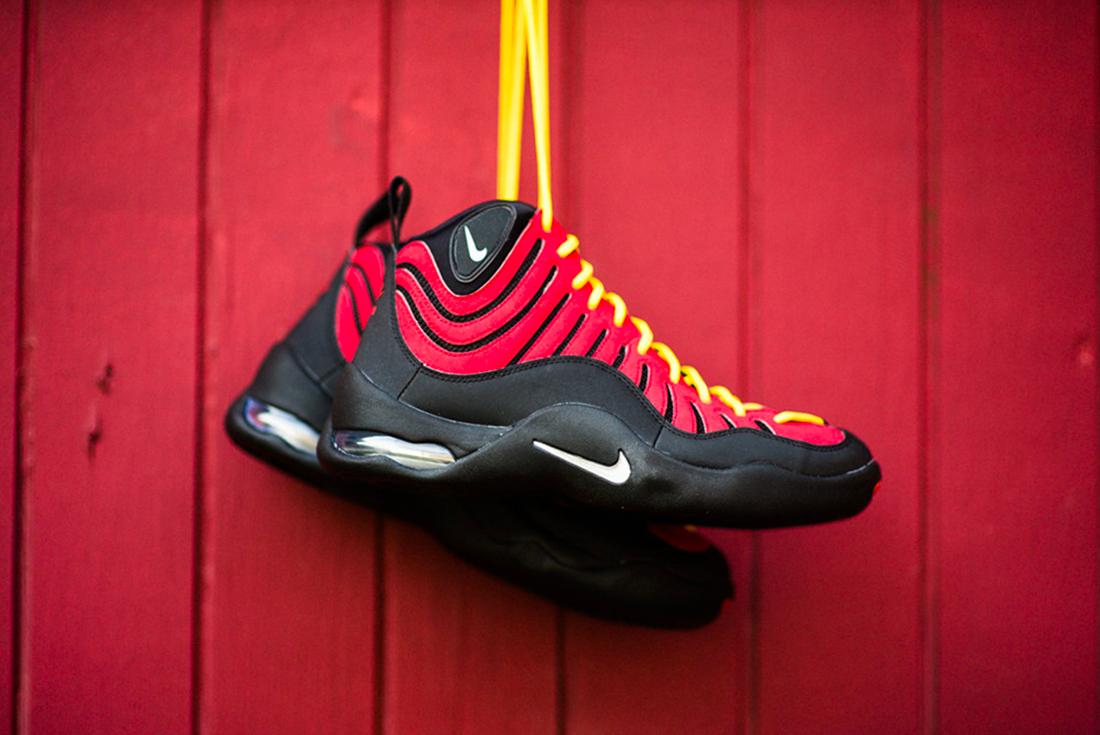Five of the Most Controversial Sneakers Ever
This article was originally published on April 8, 2021.
Controversy in the sneaker industry is nothing new. Over the years, there have been mountains of cease and desist letters, lawsuits, bank-breaking fines, and a hell of a lot of hurt feelings as part of the deep and passionate obsession that many of us have with sneakers.
These are five of the most controversial of all time.
Ari Menthol 10 (2006)
Think you’re stuck between a rock and a hard place? How about being stuck between big tobacco and the Beaverton behemoth,
Designed by Ari Saal Forman, a graphic designer from LA, the customised were dubbed the Ari Menthol 10s. Taking aesthetic cues from Newport menthol cigarettes, the classic Swoosh was replaced with a Newport Spinnaker logo, while the custom ‘ARI’ letterform appeared on the midsoles. The box was perhaps the most salient aspect of Forman’s design, the incredible packaging built as a replica of the Newport cigarette pack.
Limited to just 252 pairs, the custom sneakers quickly incited a response from Nike, who promptly issued a cease and desist letter.
But it didn’t end there, with the tobacco company sending in their lawyers shortly after.
Although every pair was ordered to be destroyed, the Menthol 10s are still one of the longest-burning sneaker controversies in history.

Jeremy Scott ‘Shackled’ (2012)
Oh dear.
Perhaps one of the most colossal screw-ups in sneaker history, Roundhouse Mids were scheduled to release in 2012. Designed by the provocative American fashion designer, the Roundhouse sneakers were manufactured with bright yellow shackles, evoking notions of slavery.
Although Scott asserted that the sneakers had been inspired by toy monsters of the 1980s, the collaboration drew intense criticism from a broad cross-section of society. As Rev. Jesse Jackson put it back in 2012, the sneakers looked like ‘slave shoes’. Jackson also said, ‘The attempt to commercialise and make popular more than 200 years of human degradation, where blacks were considered three-fifths human by our Constitution, is offensive, appalling and insensitive.’
It goes without saying, adidas were quick to scrap the shoe.

Nike Air Bakin (1997)
Hitting shelves in 1997, the Nike was first laced on the hardwood by Tim Hardaway.
But it didn’t last long.
The sneaker received backlash from the Muslim community for the logo located on the heel, which closely resembled ‘Allah’ written in Arabic text. Nike attempted to rectify the shoe by placing a fabric patch over the logo, but it wasn’t enough, and the Swoosh pulled all 38,000 pairs in circulation at the time.
A keystone of Nike’s outdoor-inspired basketball line (which also featured the Air Grill, Air Melt and the Air B-Que), later retros of the Air Bakin would replace the controversial heel logo with classic Nike Air branding.
To their credit, Nike addressed the oversight and even built playgrounds for Islamic youth organisations across the US after the brain fade.

Nike SB ‘Heineken’ Dunk (2003)
Scheduled to release during the silver box era in 2003, this was quickly and affectionately dubbed the ‘Heineken’ by the skate community.
The only problem? The Dutch brewing company weren’t shouting ‘Prost!’
The beer-brewing powerhouse sent a cease and desist before the release, forcing Nike to pull the SB Dunk from shelves.
Indeed, this only made the sneaker more popular amongst sneakerheads, the unofficial Heineken colourway becoming one of the most coveted Dunk releases of all time.
Air Jordan 1 ‘Banned’ (1985)
The sneaker that changed it all.
Nicknamed the ‘Banned’ colourway by its many fans, the black and red () is still arguably the most iconic design from Jordan Brand’s vast sneaker hangar.
When it was first laced by Michael Jordan, the Air Jordan 1 was reportedly banned by the NBA for its unique colour-blocking because the sneaker did not conform to the NBA’s strict uniform policy at the time.
MJ was fined $5000 every time he wore the shoes (Nike picked up the tab), a tidbit that only further mythologised the silhouette and its high-flying Rookie of the Year talent.
Nike’s marketing team quickly jumped on board to capitalise on the bad boy image the NBA had accidentally helped to curate, releasing one of the most legendary sneaker commercials ever.
Still, not everyone is convinced that it was actually the Air Jordan 1 that violated the NBA’s uniform policy. According to , the model in question was actually a Player Exclusive version of 1984’s Air Ship! Either way, this whole episode sure did stir up some controversy in those very early days of the sneakersphere.
